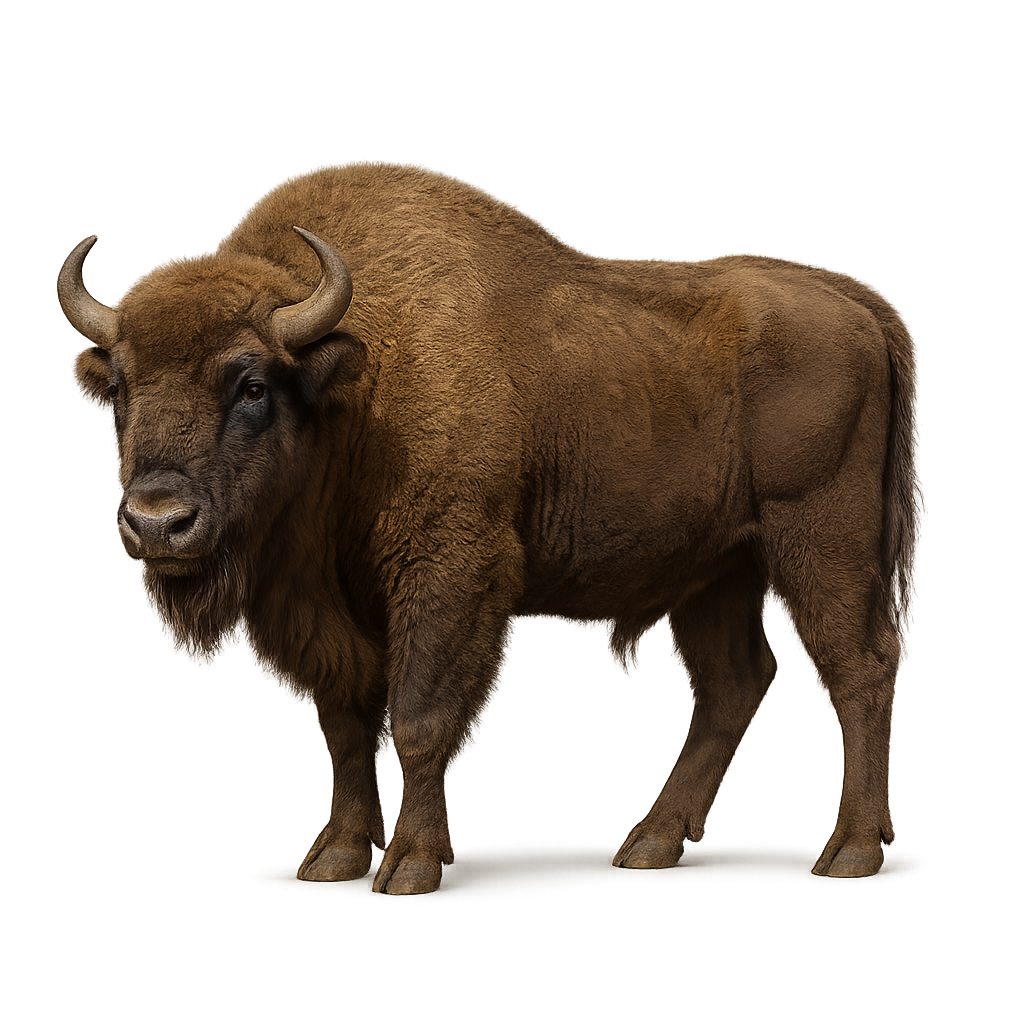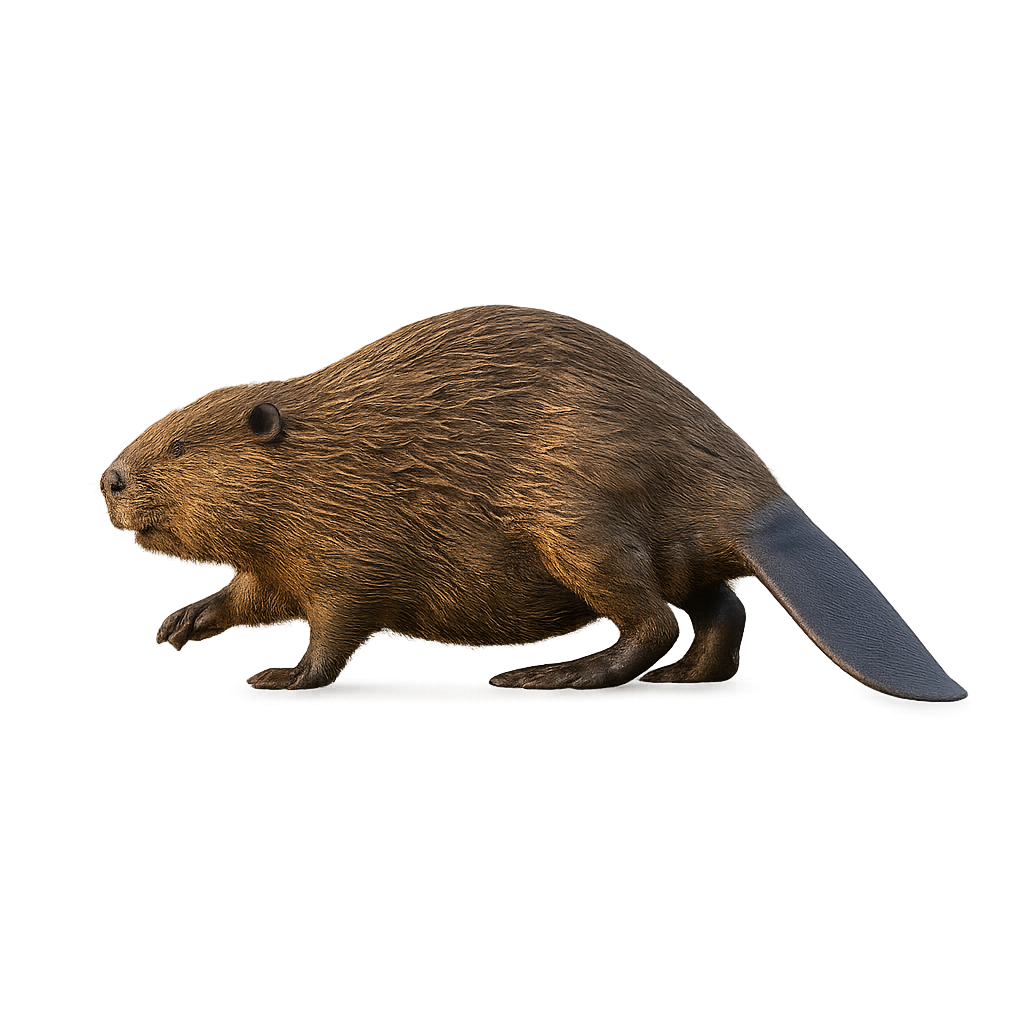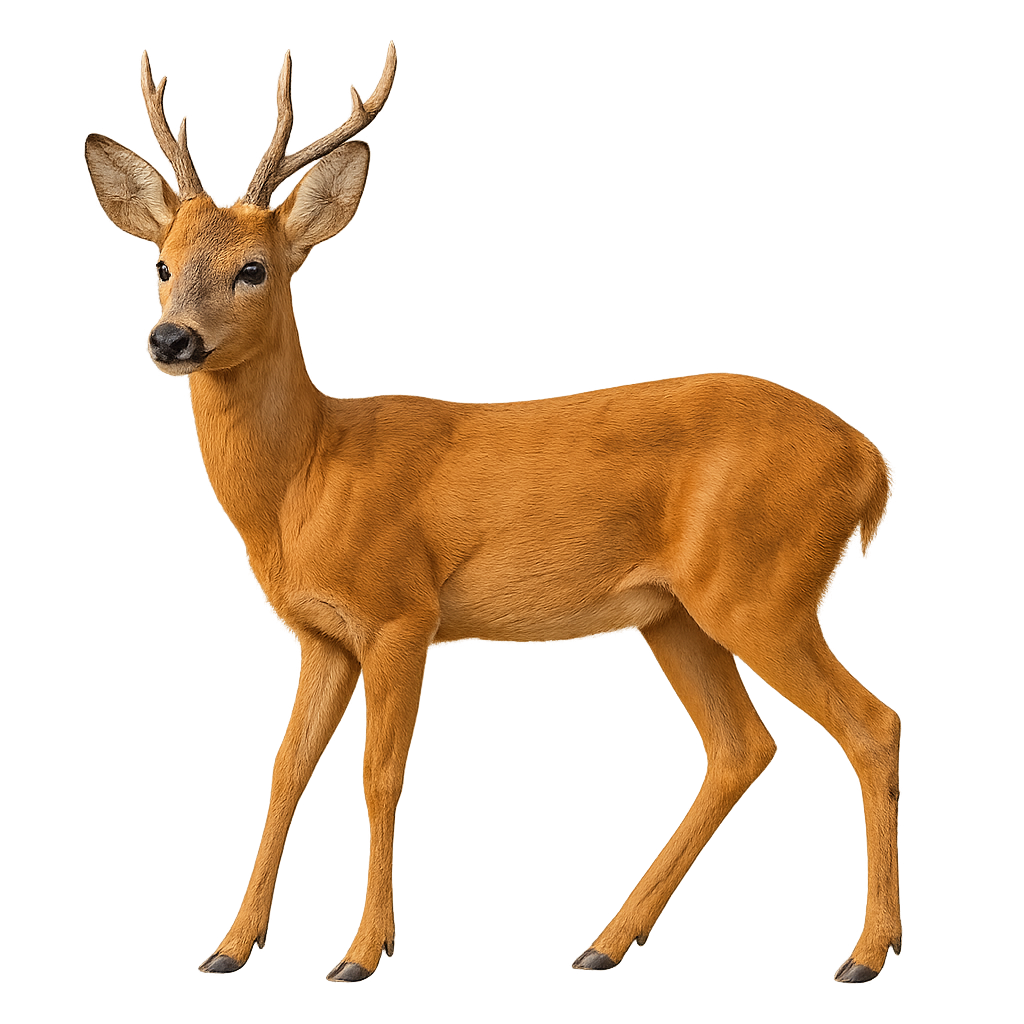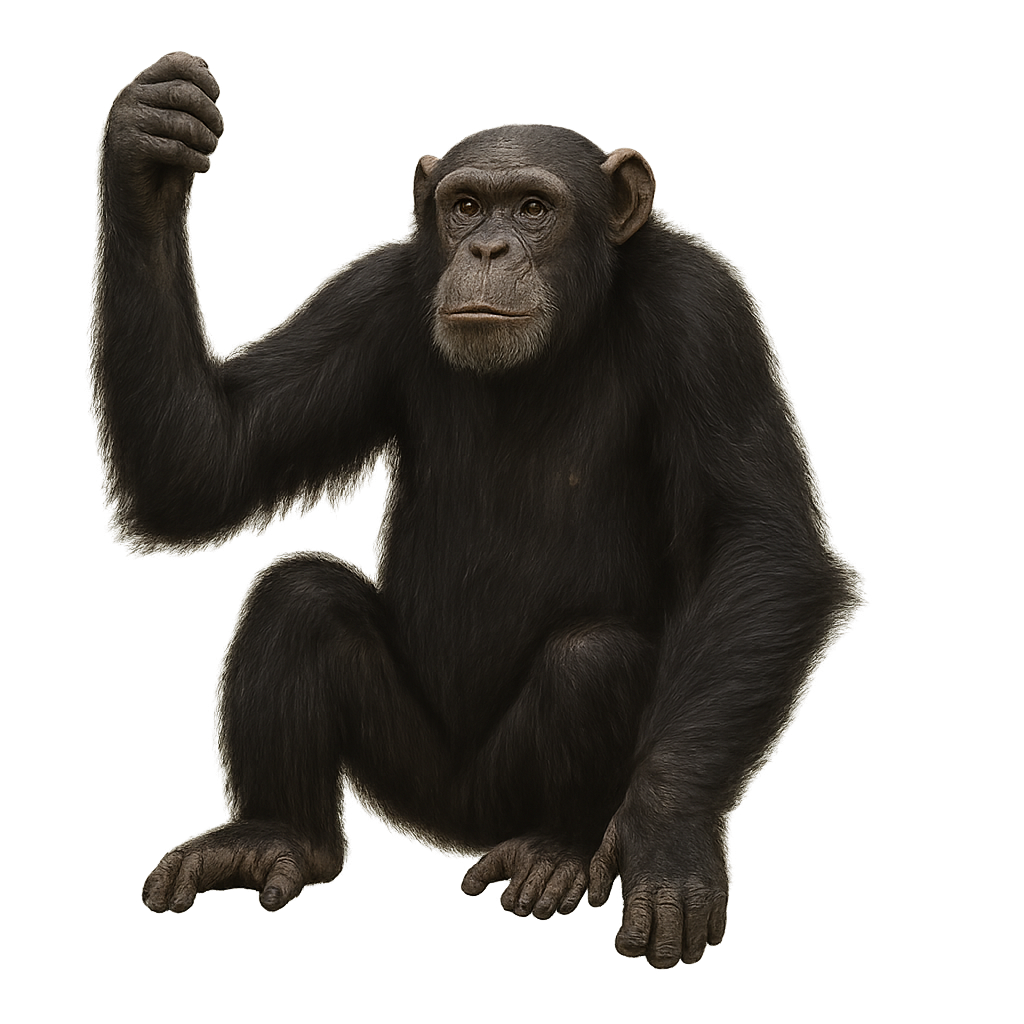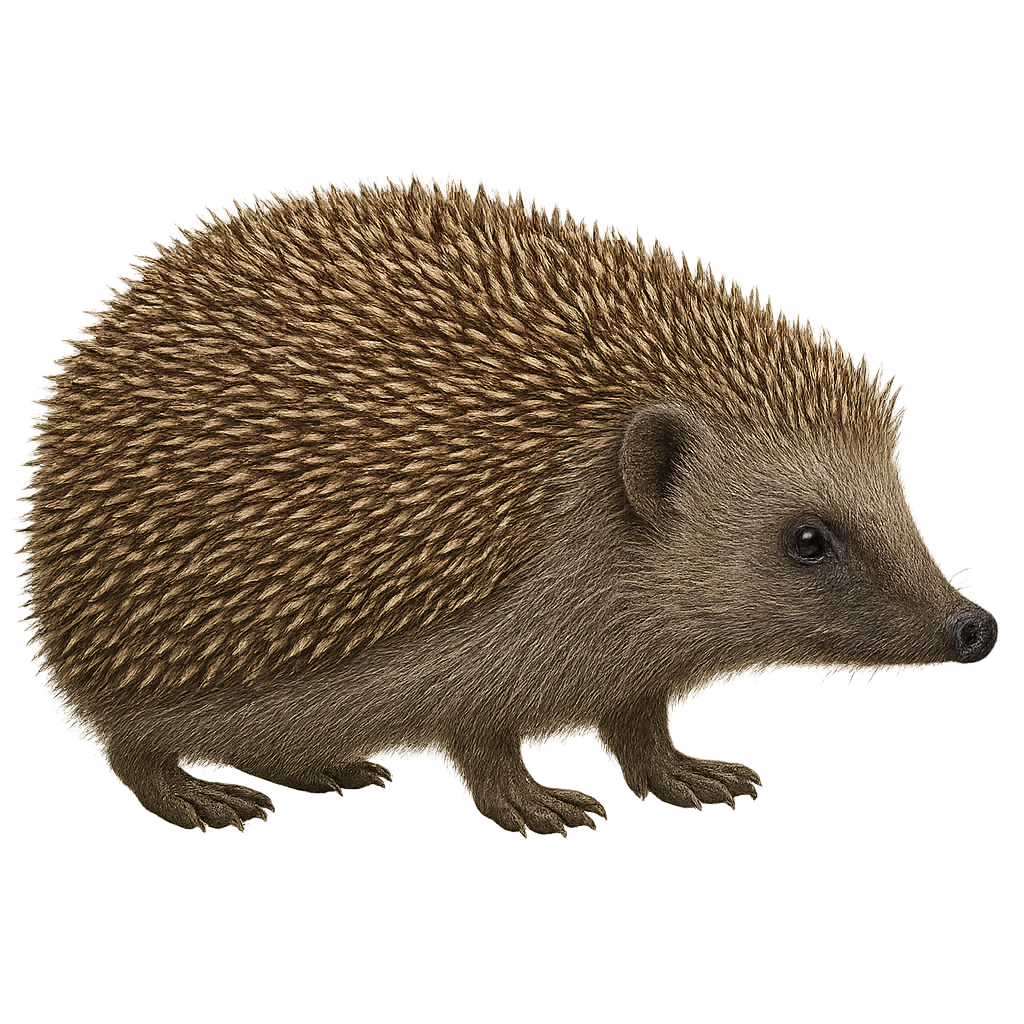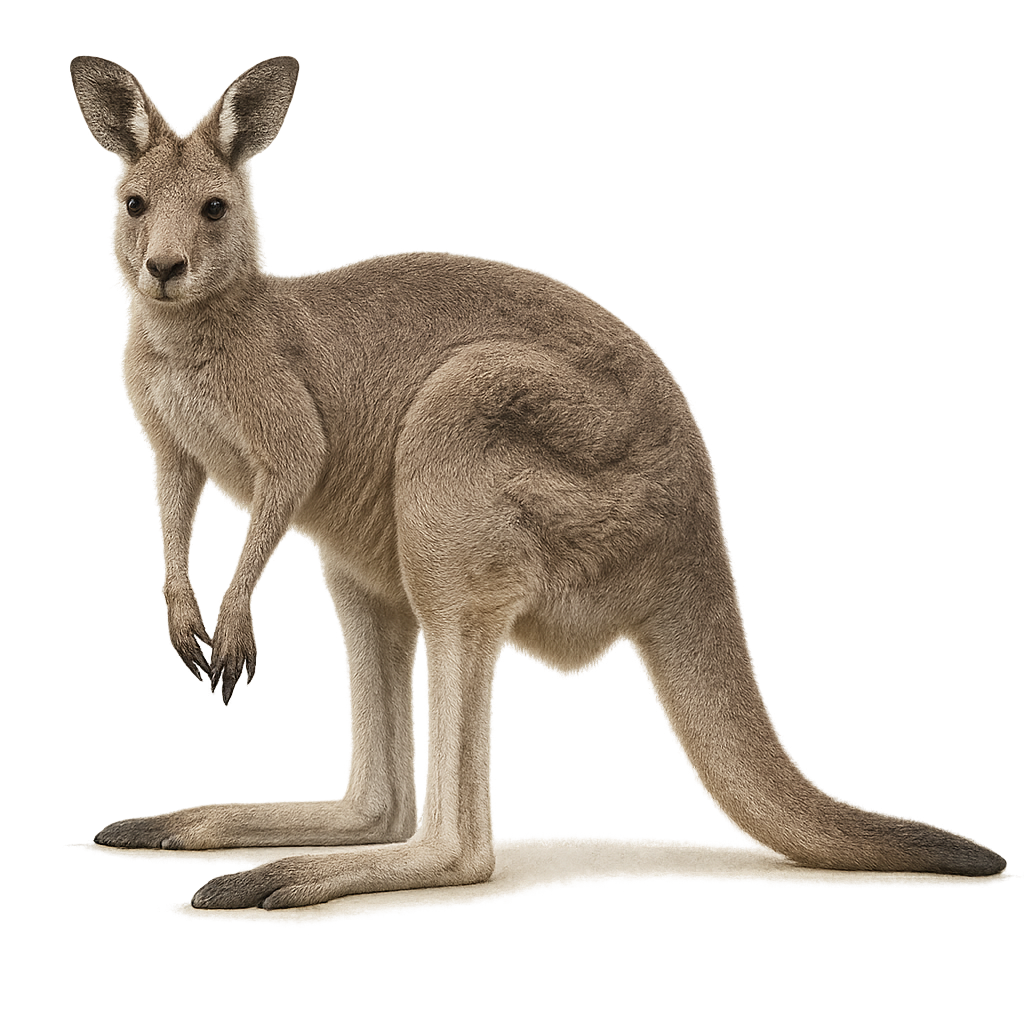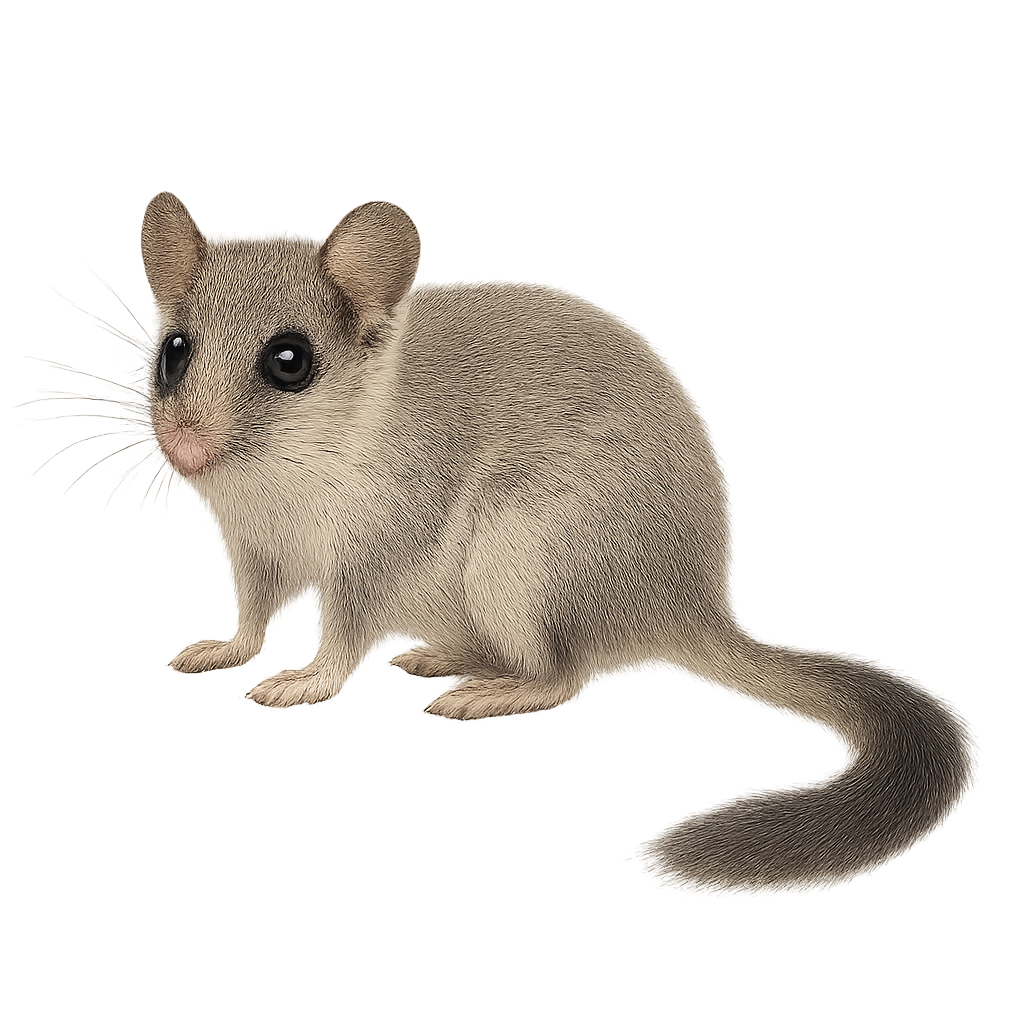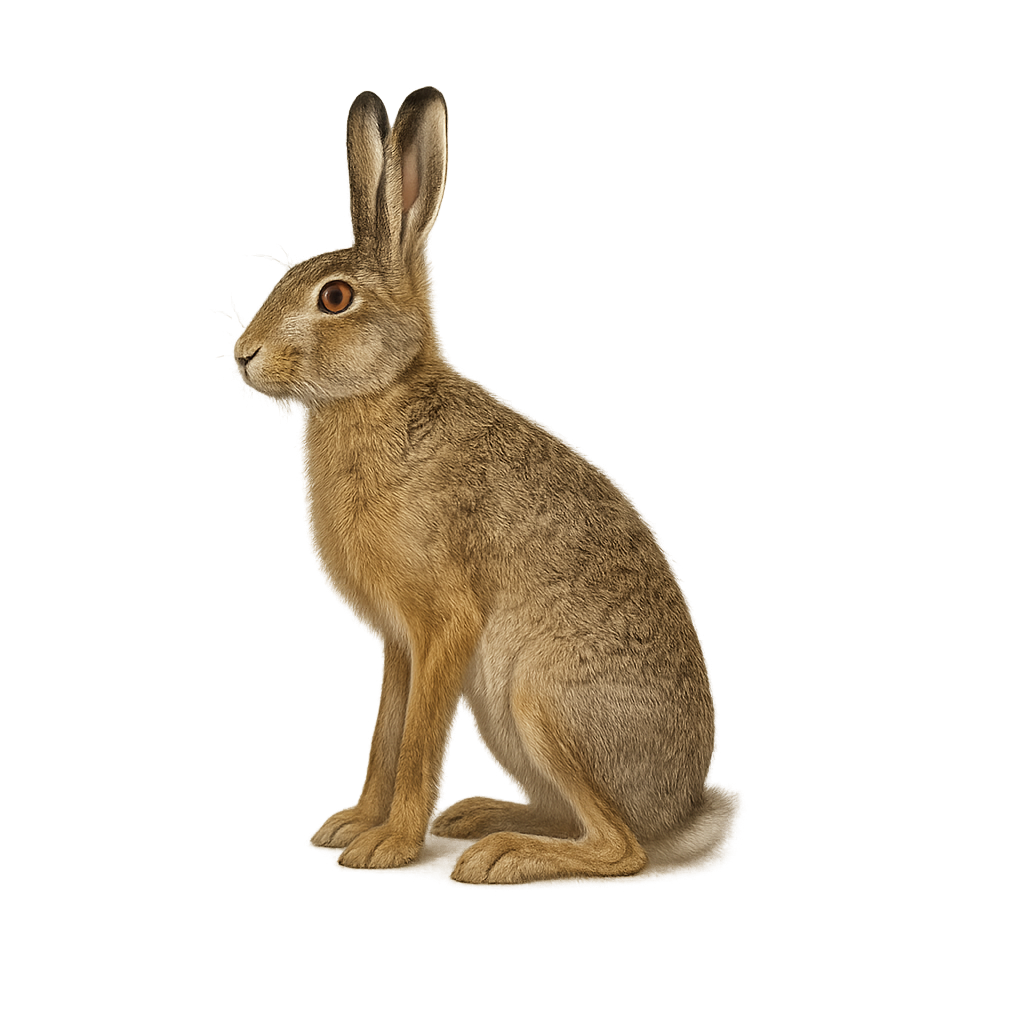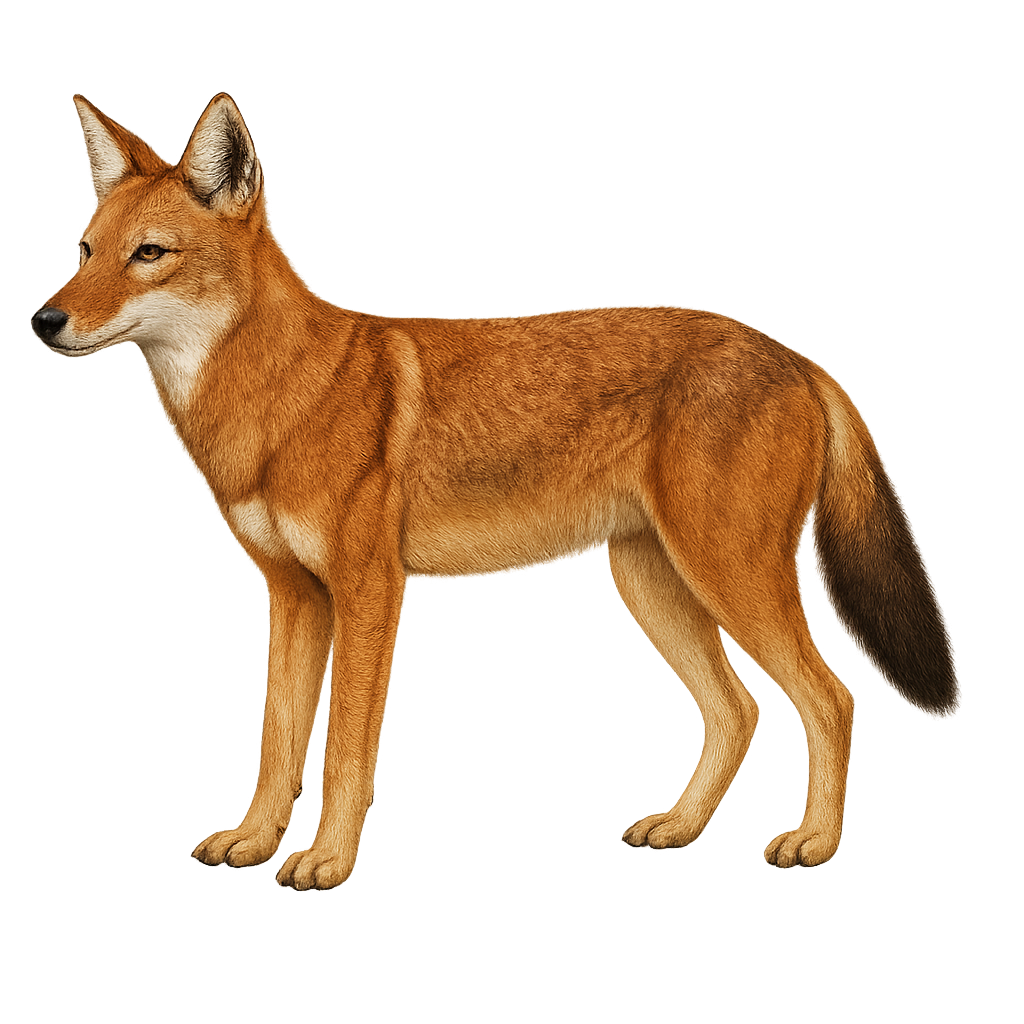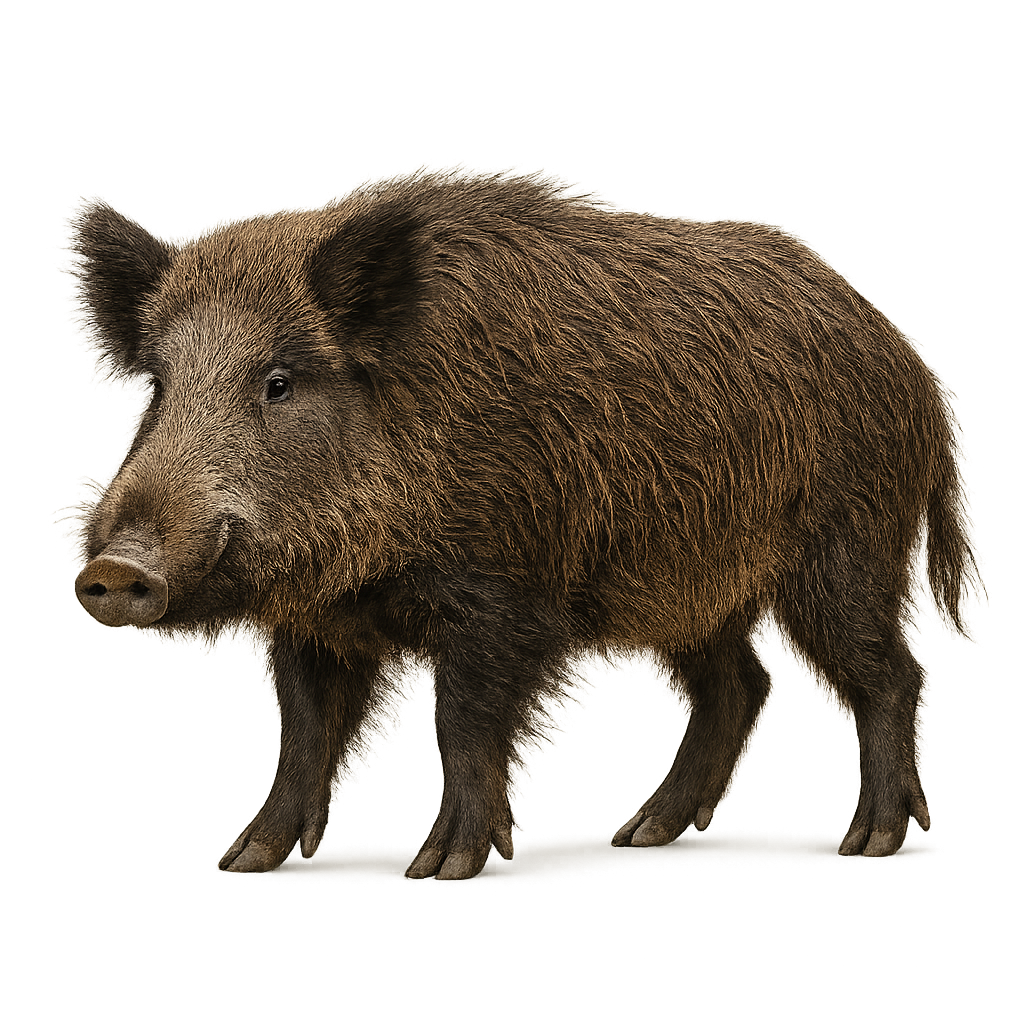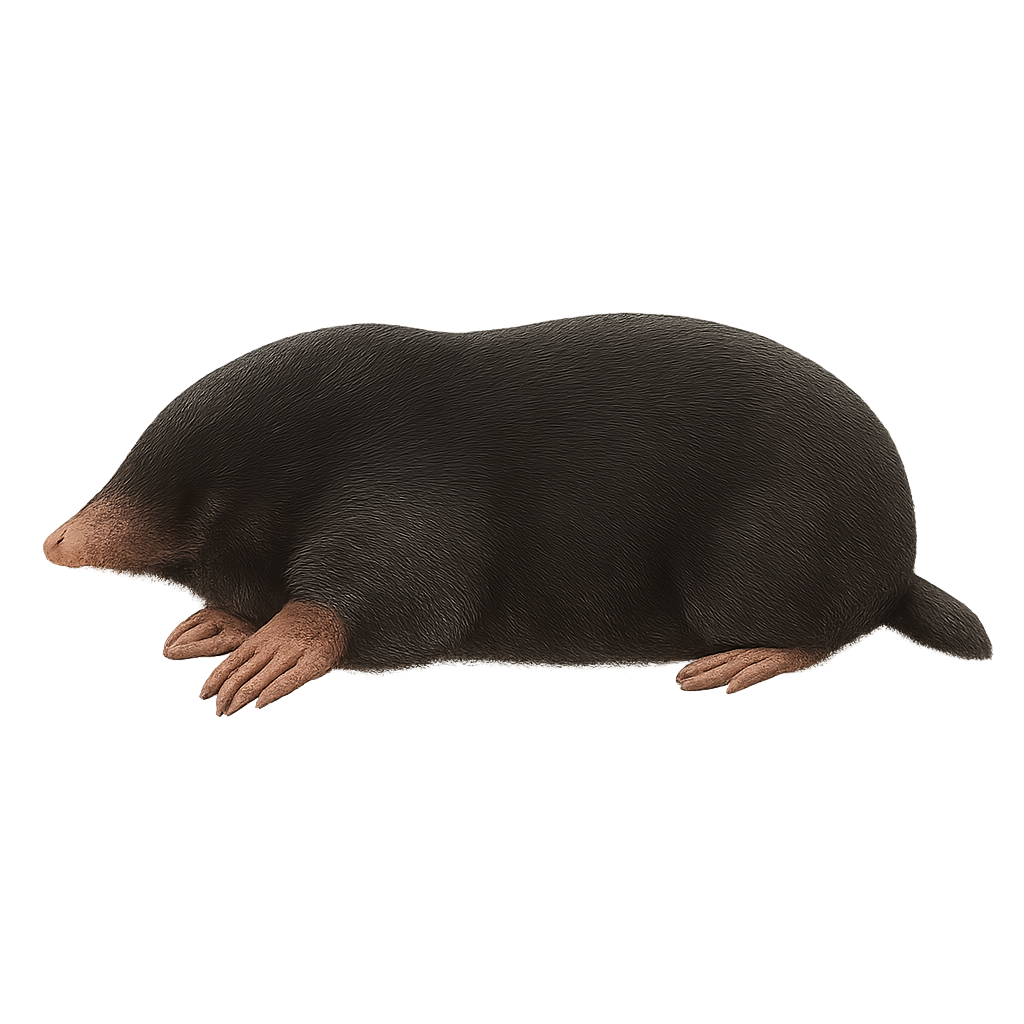The European Bison is the largest land mammal in Europe, characterized by its imposing size, thick fur, and arched back. Once widespread across the forests of Europe, it nearly went extinct in the early 20th century, but thanks to conservation programs, wild populations have been reintroduced in several European regions. The European Bison primarily inhabits forests and wooded meadows, where it feeds on grasses, leaves, twigs, and young tree shoots.
This bison is a social animal, living in small groups or large herds, with males fighting for dominance. While its population is growing, the European Bison remains a vulnerable species due to habitat loss and fragmentation of its territory. The protection and management of its habitats remain essential for its survival.
The European Badger is a medium-sized carnivorous mammal, easily recognizable by its gray fur, white stripes on its head, and stocky build. It primarily inhabits forests and hedgerows in Europe, where it digs complex burrows called "setts" for shelter and raising its young. The European Badger is omnivorous, feeding mainly on worms, insects, fruits, roots, and small mammals. Its nocturnal habits and solitary nature make it a difficult animal to observe.
It is an excellent digger and uses its powerful claws to modify its environment in search of food or to expand its burrow. While its population is generally stable, the European Badger faces threats such as habitat loss and road accidents. Protecting its habitats and managing its territories are crucial for the species' conservation.
The European Beaver is a large, semi-aquatic rodent renowned for its exceptional ability to alter its environment. This rodent is easily identifiable by its brown fur, large orange incisors, and flat, scaly tail. It primarily inhabits rivers, lakes, and wetlands, where it builds dams to create ponds and wetlands that serve as refuges. The European Beaver is an excellent swimmer, capable of staying underwater for several minutes to move or escape danger.
It feeds mainly on bark, roots, and young tree shoots. In addition to its ability to modify waterways, the European Beaver plays a crucial role in the ecosystem by promoting the regeneration of wetland areas, which benefits many other animal species. Although its population was historically threatened by hunting and habitat loss, conservation efforts have stabilized its numbers, and the species is now protected in many regions.
The European Wildcat is a small, nocturnal, and discreet feline, often considered the ancestor of the domestic cat. It has a thick coat, typically gray-brown with dark stripes, which allows it to blend into its forested environment. Its size and behavior make it an agile and efficient hunter, primarily active at dusk. The European Wildcat has pointed ears and a slender body, with relatively long legs that allow it to move easily in varied environments, such as deciduous forests and mountainous regions.
This solitary cat feeds mainly on small mammals, birds, and insects, hunting them stealthily. While its population remains stable in some regions, it faces threats, including habitat loss, hybridization with domestic cats, and poaching. Conservation efforts are in place to protect this species, which is considered an important part of the forest ecosystem.
The Siberian Roe Deer, also known as the Asian Roe Deer, is a slightly larger species of cervid compared to the European Roe Deer. It is easily recognizable by its darker coat, ranging from brown to gray, with white markings around the mouth and belly. Males carry antlers that, while smaller than those of other large cervids, are still distinct and visible. This species primarily inhabits coniferous forests and wooded areas of Siberia, Central Asia, and Mongolia, where it hides during the day and becomes more active at dusk and night.
The Siberian Roe Deer is an herbivore, primarily feeding on vegetation, including young shoots, leaves, fruits, and bark. It is known for its great agility and speed, allowing it to move easily through the rugged terrain of its habitat. While its population remains stable in some regions, it is threatened by deforestation, hunting, and habitat fragmentation.
The Eastern Chimpanzee, or Pan troglodytes schweinfurthii, inhabits the tropical rainforests of Central and East Africa. Known for their remarkable intelligence, tool use, and complex social structures, these primates live in communities of up to 150 individuals led by an alpha male. Their omnivorous diet includes fruits, leaves, insects, and occasionally meat. Eastern chimpanzees communicate through a variety of vocalizations, gestures, and facial expressions. Unfortunately, they are threatened by deforestation, poaching, and diseases, leading to a significant decline in their population over recent decades.
The Red Squirrel is a small tree-dwelling mammal, well-known for its reddish-brown fur and long ears, often tipped with tufts of hair. It typically measures between 20 and 25 cm in length, with a bushy tail that can reach up to 25 cm in length. This rodent is mainly found in deciduous and mixed forests across Europe and Asia, but it is also present in urban parks and gardens. The Red Squirrel is omnivorous, feeding mainly on nuts, seeds, mushrooms, and occasionally insects or bird eggs. Highly agile, it moves with ease between trees, using its tail as a stabilizer. It is a territorial animal that builds ball-shaped nests made of twigs, moss, and leaves, often placed in tree trunks or branches. While the species is still fairly widespread, it faces threats such as habitat loss, competition with the introduced Grey Squirrel, and collisions with vehicles.
The Mountain Gorilla is a subspecies of gorilla, primarily found in the volcanic mountains of Central Africa, notably in the forests of the Virunga region, between Rwanda, Uganda, and the Democratic Republic of the Congo. This gorilla is smaller than its cousin, the lowland gorilla, with an average height of 1.4 to 1.8 meters and a weight ranging from 140 to 220 kg for males, and 90 to 120 kg for females. Its fur is dense, typically black, with silver-gray hair on the backs of adult males, hence the name "silverback." Mountain Gorillas live in family groups led by a dominant male, the silverback, who is responsible for the protection and well-being of the group. They primarily feed on plants, fruits, leaves, and stems. Although they are peaceful and shy animals, Mountain Gorillas are critically endangered due to habitat loss, illegal hunting, and diseases transmitted by humans.
The Eastern Hedgehog, or Erinaceus concolor, is a small insectivorous mammal found primarily in Eastern Europe and Asia Minor. It is recognizable by its stiff spines covering its back, providing effective protection against predators. This hedgehog is nocturnal, spending its days resting in nests made of leaves and branches. It mainly feeds on insects, worms, and sometimes fruits. Although generally solitary, the Eastern Hedgehog can be observed in small groups during the breeding season. It is capable of hibernating during the winter months, reducing its metabolic activity to survive the cold temperatures.
The Eastern Grey Kangaroo, or Macropus giganteus, is a prominent marsupial native to Australia, recognized for its large size and unique hopping locomotion. It has a grey-brown coat with a lighter belly. Males can reach up to 2 meters in height and weigh around 66 kg, while females are generally smaller. These kangaroos live in groups known as "mobs" and are primarily herbivorous, feeding on grasses and leaves. They possess powerful hind legs and a muscular tail used for balance. Although they are mostly active at dusk and dawn, they can also be seen during the day.
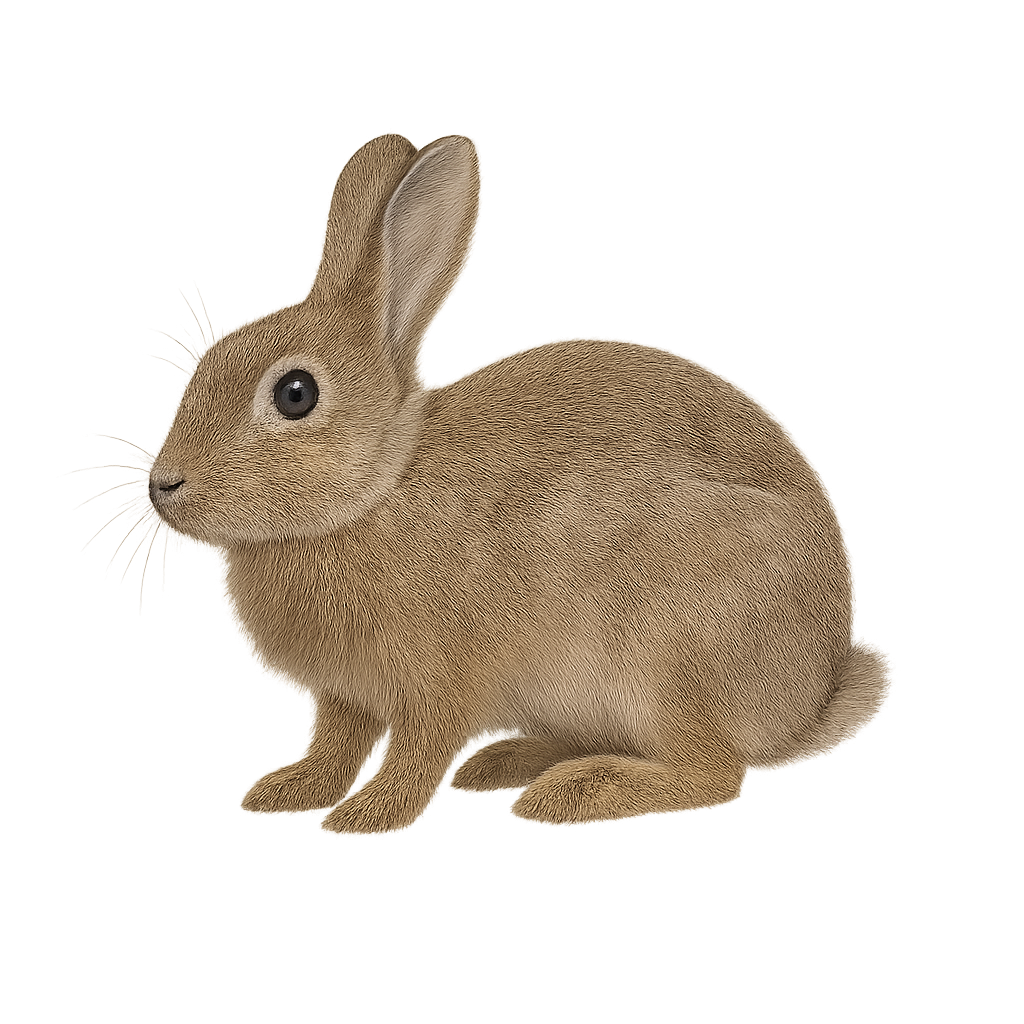
The European Rabbit is a small herbivorous mammal, widely distributed across Europe and in certain parts of the world where it has been introduced. It measures about 40 to 50 cm in length, with a short tail and soft fur that varies from light gray to brown, with a white belly. The European Rabbit is known for its long ears, bright eyes, and powerful hind legs that allow it to leap quickly. It typically lives in groups in burrows called "warrens," which it digs in soft soils or dense vegetation. This rabbit is primarily herbivorous, feeding on grasses, roots, leaves, and fruits. While it is an excellent breeder, with several litters a year, it is vulnerable to predators such as foxes, birds of prey, and carnivores. Despite its large population, the European Rabbit is threatened in some areas by excessive hunting, habitat loss, and the spread of diseases. It plays an important role in ecosystems as prey for many carnivores and as an ecological engineer, digging burrows that alter soil structure.
The Garden Dormouse is a small nocturnal rodent, often compared to a miniature squirrel, found primarily in Europe and Asia. It measures about 20 cm in length, with a tail of around 12 cm, and weighs between 100 and 150 g. Its coat is typically light gray or brown, with a dark line running from its eyes to its back and a lighter area on its belly. The Garden Dormouse is primarily nocturnal and arboreal, feeding on fruits, nuts, seeds, as well as small insects and larvae. It is an excellent climber and takes refuge in trees or crevices to sleep during the day. This rodent is a hibernator, retreating into its nest in the fall to survive the winter, which is essential for its survival in the cold. Although the Garden Dormouse is protected in some areas, it is threatened by deforestation and the reduction of its natural habitat.
The European Hare is a large herbivorous mammal, easily recognizable by its long ears and powerful hind legs. It measures about 50 to 70 cm in length, with a short tail and a wingspan of 70 to 90 cm, and weighs between 3 and 5 kg. Its coat varies with the seasons: in winter, it becomes lighter, while in summer, it takes on a brown or gray hue, allowing it to blend effectively into fields and meadows. The European Hare is a solitary and territorial animal, primarily found in open areas such as fields, meadows, and sparse woodlands. It is particularly fast and agile, capable of running at speeds of over 60 km/h when pursued. This hare primarily feeds on grasses, leaves, fruits, and roots. Although the species is widespread in Europe, it faces threats from hunting, habitat loss, and human disturbances.
The Gray Dormouse is a small nocturnal rodent, closely related to the Common Dormouse, found mainly in Europe in forests, hedgerows, and gardens. It measures between 10 and 15 cm in length, with a tail of about 8 to 12 cm, and weighs between 40 and 100 g. Its coat is generally light gray or brown-gray, with lighter shades on the belly and dark eyes that give it a lively expression. The Gray Dormouse is an excellent climber and is primarily arboreal. It feeds on fruits, seeds, nuts, and sometimes insects and small worms. This rodent is known for its ability to hibernate during the winter, retreating into natural cavities or nests made of leaves and moss to survive the cold temperatures. While it is relatively common, it is threatened by habitat loss, deforestation, and disturbances caused by human activity.
The Ethiopian wolf, or Canis simensis, is a rare and iconic canid of the Ethiopian highlands. With its distinctive reddish coat, it is often mistaken for a fox, although its size and morphology are more akin to a wolf. This predator specializes in hunting rodents, which it captures using keen hearing and solitary hunting techniques. Unfortunately, it is threatened by habitat loss, diseases transmitted by domestic dogs, and population fragmentation. Conservation efforts are crucial to ensure its survival.
The Eastern Wolf is a subspecies of the gray wolf, primarily found in the regions of Eastern Europe, notably in Poland, Romania, Bulgaria, and Ukraine. It measures about 1.2 to 1.5 meters in length, with a tail of 35 to 45 cm, and weighs between 25 and 45 kg, with males generally being larger and more massive than females. Its coat is thick and generally light gray to dark gray, with brown and white shades on the belly and legs. The Eastern Wolf primarily inhabits forests, mountains, and protected areas, where it hunts prey such as deer, wild boars, roe deer, and sometimes small mammals. It is a social predator, living in packs, and cooperates with other members of its group to capture prey. Although this subspecies has been the subject of conservation programs, it remains vulnerable to hunting, habitat loss, and conflicts with humans.
The Eurasian Otter is a semi-terrestrial aquatic mammal found primarily in rivers, lakes, and coastal areas of Eurasia. It measures between 60 and 90 cm in length, with a tail of about 30 to 40 cm, and weighs between 5 and 12 kg. Its coat is thick and waterproof, dark brown on the back and lighter on the belly, allowing it to stay warm and move easily in the water. The Eurasian Otter is an excellent swimmer, using its hind limbs to propel itself and its tail to stabilize. It primarily feeds on fish but can also hunt amphibians, crustaceans, and small mammals. It is a solitary animal or lives in small family groups, marking its territory with traces and droppings. Although the species is protected in many areas, it is threatened by water pollution, habitat loss, and poaching.
The European Polecat is a small carnivore found primarily in Europe, inhabiting a variety of environments such as forests, meadows, and agricultural areas. It measures about 45 to 60 cm in length, with a tail of 20 to 30 cm, and weighs between 0.8 and 1.5 kg. Its fur is generally light brown or gray, with lighter underparts and a distinctive black mark on its face, surrounding its eyes. The European Polecat is a nocturnal and opportunistic predator, primarily feeding on small mammals, birds, eggs, as well as fruits and insects. While it is often perceived as a pest by farmers, it plays an important role in regulating populations of small animals. Its population is generally stable, but it can be threatened by habitat loss and road collisions.
The Wild Boar is a large omnivorous mammal found primarily in forests, wooded areas, and mountains of Europe, Asia, and North Africa. It measures between 1.2 and 1.8 meters in length, with a tail of 15 to 25 cm, and weighs between 50 and 100 kg, though some specimens can reach up to 200 kg. Its fur is typically brown, with darker hair on the back and lighter on the sides. The Wild Boar is a nocturnal animal, primarily feeding on roots, fruits, seeds, insects, and small animals. While it is considered game, it can sometimes pose a threat to agricultural crops due to its tendency to root through the soil. This species is widely distributed, and its population remains relatively stable, although it is sometimes threatened by excessive hunting and habitat loss.
The European mole, Talpa europaea, is a small burrowing mammal found primarily in meadows, forests, and gardens across Europe. It is recognizable by its cylindrical body, velvety black fur, and powerful forelimbs adapted for digging. Measuring about 14 cm in length, it has a pointed snout and small eyes often hidden by its fur. Although nearly blind, it has a highly developed sense of smell and touch, allowing it to navigate efficiently underground. The European mole plays an important ecological role by aerating the soil and controlling pest insect populations.
The European Mink is a small carnivorous mammal primarily found in wetlands, rivers, and marshes of Eastern Europe, notably in Russia, Ukraine, Poland, and Hungary. It typically measures between 45 and 55 cm in length, with a tail of about 15 to 20 cm, and weighs between 700 g and 1 kg. Its fur is generally dark brown on the back and lighter on the belly, with a distinctive black band running across its face. The European Mink is an excellent swimmer and fisher, primarily feeding on fish, crustaceans, and small mammals. Unfortunately, it is critically endangered due to habitat loss, water pollution, and competition with the American Mink, an invasive species. Its population has significantly declined, and it is now classified as an endangered species.


